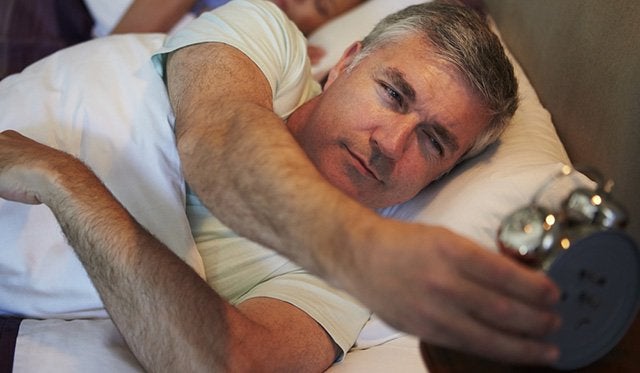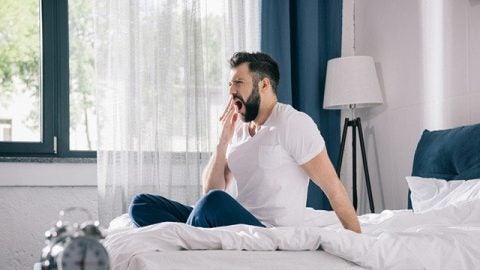Most of us are monophasic pattern sleepers, which means that we get all of our sleep in one stretch. According to the National Institute of Health, you spend about 26 years in bed out of your 78.21-year average life expectancy. We all need sleep to help retain our memories and let our muscles and organs recover and rest. It also allows our brains to clean out toxins.
College students usually follow a biphasic sleep schedule, which means they sleep for 5-6 hours at night and take a 30-90 minute nap during the day. However, throughout history, more people have been trying the polyphasic sleep schedules.
What Is Polyphasic Sleep?
The polyphasic sleep cycle is when you sleep in short bursts throughout the day rather than sleeping all night. There are a ton of polyphasic sleep schedules out there, but one of the most popular is a core sleep that lasts anywhere from 90-minutes to 6 hours, which are then supplemented by 20-minute naps. The length and number of naps can vary based on each person’s schedule. Those who are on the normal core sleep schedule spend a total of around three to seven hours asleep. Another schedule consists of multiple naps throughout the day that are around 20-minutes long, equalling out to around two to three hours of sleep per day.
How It Works
There are three adaptations that sleep schedules go through known as ultradian rhythm entrainment, sleep repartitioning, and circadian rhythm entrainment. Each one of these control how you sleep and wake.
— Ultradian Rhythm
This controls when you wake and feel tired. You may feel this throughout your day as there are periods of alertness and drowsiness. The only way you can make an improvement to this is trying to sleep based on a constant rhythm and remain awake for an equal amount of time between sleep times.
— Sleep Repartitioning

— Circadian Rhythm
This will change to adapt to the new time of day. With this will come digestive timing and a definite position of graveyard hours along with a general stability. The clock that hangs on your wall does not matter when it comes to your circadian rhythm, but lighting conditions do.
Types of Sleep Patterns
There are so many different types of sleep patterns out there. Here are a few:
— Monophasic
This is what today’s society dubs as normal sleep. This is your usual eight hours of sleep.
— Biphasic Sleep
Those who have a biphasic sleep schedule will usually sleep for five to six hours at night and then rest for 30-minutes throughout the day for an energy boost. However, a siesta can last longer, usually around 90-minutes. An extended siesta allows a person to have one complete sleep cycle. Naps are super beneficial, which is why biphasic sleeping is so popular.
— Polyphasic
There are actually three categories when it comes to polyphasic sleeping:
- Everyman-Three hours of sleep with three 20-minute naps throughout the day.
- Uberman-Three hours of sleep per day with six 30-minute naps throughout the day.
- Dymaxion-Two hours of sleep per day in the form of 30-minute naps every six hours.
Why Become A Poly-Sleeper?
There are a variety of reasons as to why you should become a poly-sleeper. Here are a few:
— You Have More Time In Your Day
Have you ever thought that there just wasn’t enough time in the day to do all of the tasks you need to? On average, those who sleep for nine hours is awake for only 227.5 days per year out of 365. Changing your nap schedule can give you an extra 40 days per year to do all the things you never thought you had the time to do. This is somewhat like getting a free week’s vacation. You can also cut down to three hours of sleep per day to gain an extra 91 days out of the year that you never had. Overall, you will have more time in your life by doing the polyphasic sleeping thing.
— Longer Life
It’s a familiar belief that you need eight hours of sleep for great health, but a six-year experiment of more than one million adults from ages thirty all the way to one-hundred and two, has shown that those who only sleep for six to seven hours per night have a lower rate of death. Those who sleep for eight hours or more or less than four hours per night were shown to have an increased rate of death compared to those who sleep six to seven hours per night.
These individuals who were tested also got less REM and SWS sleep than the suggested number as you do being a monophasic sleeper.
— Better Learner
For those who are taking 90-minute naps that go through both SWS and REM sleep, performance over 24 hours showed as much learning as seen normally in two times that length of time. Based on the behavioral improvement perspective, a nap is as good as a good night sleep for better learning.
— Mood Elevation

— More Lucid Dreams
Since you are sleeping more frequently, you are getting dream-full REM in your various nights of sleep. This means that you will be dreaming more! A lot of poly-sleepers also have lucid dreams because they go together.
Long-Term Effects of Poly-Sleeping
Of course, there’s always a risk that comes with things that you do. Since there is lower light sleep, the sleep spindles and k-complexes are reduced as well. Researchers seem to think that these sleep spindles are what the brain learns about what nerves control which specific muscles when you are asleep. This activity has been found to be linked to the integration of new information into pre-existing knowledge and remembering and forgetting. These are all associated with younger people, and it’s unknown as to how these are important to adults.
The function of the K-complex helps the activation of homeostasis of synapses and the consolidation of memory.
Why NOT Try Poly-Sleep?
— Poor Health
If you are ill or have a weak immune system, then the first bit of sleep deprivation that you will go through may make things worse. More often than not, people have become ill within the first two days of the adaptation because just one bad sleep can lead them right to a cold or the flu. Like REM suppression, there is an immunity suppression when sleep deprivation begins.
You can help your diet by cutting out foods that are refined and sugars so that your sensitivity to insulin and blood sugar levels even out. This helps control your weight and immune system. If you have better food quality, you’ll have better sleep quality.
— Alcohol & Caffeine
Your addictions can and will ruin your sleeping habits. They can also prevent you from getting quality and fast sleep. Depressants and stimulants can generally delay REM or reduce SWS.
You might be interested in: How Does Caffeine Really Affect Sleep?
Famous Poly-Sleepers
A lot of people think that poly-sleeping is an impossible feat. However, there are actually some great minds that followed the polyphasic sleeping schedule.
—Nikola Tesla
Inventor Nikola Tesla is responsible for a large number of conveniences that we all use today, and he was a poly-sleeper. He was responsible for the development of alternating currents that run through most homes today. He also developed a way to transport electricity over 25 miles just by lighting a 200 lamp. He found the time to do this because he slept less than two hours per day because he followed the polyphasic sleep schedule.
— Leonardo Da Vinci
Leonardo Da Vinci only slept 1.5 to 2 hours per day. He was a scientist, engineer, and an artist. He was known for painting the Mona Lisa and creating weapons of war. Not to mention, he was responsible for designing some of the very first flying machines. He was known for taking very short naps throughout the day for about 10 minutes.
— Buckminster Fuller
He was known for quite a few things. He was the one who coined Dymaxion. This was said to be a combo of the word dynamic maximum tension. He would use this to help distinguish his works from others. He slept polyphasically for around two years according to TIME Magazine in 1943.
— Winston Churchill
He was probably one of the most documented polyphasic sleepers of all time. He would get about five hours of sleep per night and then he would sleep an additional 1-3 hours between lunch and dinner. He ended the appeasement policy of Neville Chamberlain. He was elected as prime minister twice as well.
Tips For Poly-Sleeping
If you are still thinking about poly-sleeping, here are a few tips and tricks that can help you conquer it:
— Start Slow
You can’t go right from monophasic to polyphasic in one night. You and your body need to adjust to it, especially when you try to get rest during naps. You should cut down two hours from your regular sleep and add two twenty-minute naps throughout the day. If you’re having trouble, consider a sleep mask.
— Don’t Cut Out The Caffeine Immediately
Caffeine is something that you absolutely need to have for those moments when you awake at the wrong time. When you first wake up, have a piece of chocolate or a cup of green tea. Half of it is going to be out of your system within five-hours of waking up. This is just in time for your next.
— Don’t Wake Up At The Wrong Time
Sometimes, you need to wake up feeling chipper and great and other times you need a ton of alarm clocks. The optimal waking point is at the end of your REM cycle. To fight your mind in these states, you can snooze the alarm or add another alarm in 15-minute intervals. There is an app called Sleep Cycle that records all of your movements while you are asleep and it will wake you up right at the perfect time between an interval.
— Meditate
If you want to start having lucid dreams, you need to meditate. This helps you gain extra awareness at night and helps you stay focused and control your excitement during lucid dreams so that you aren’t waking up each time.
— Endurance
There are going to be good and bad days in every life, but we all know that a winner will never quit and a quitter will never win. The key is to stick with it if you start doubting your abilities to poly-sleep. Make sure that you have enough things to do to keep you awake and ready to go as well as motivated. You can write about it online or tell as many people as you can to help keep you motivated.
Conclusion
As you can see, there are many benefits and drawbacks of polyphasic sleeping. This is something that you can’t just jump right into. Make sure you ease yourself into it. Follow the simple tips and tricks and don’t be afraid to try something new. If you have experience with polyphasic sleeping let us know. Also, don’t forget to try the handy polyphasic sleep calculator. This helps you plan your sleep, and there is also an app.
























